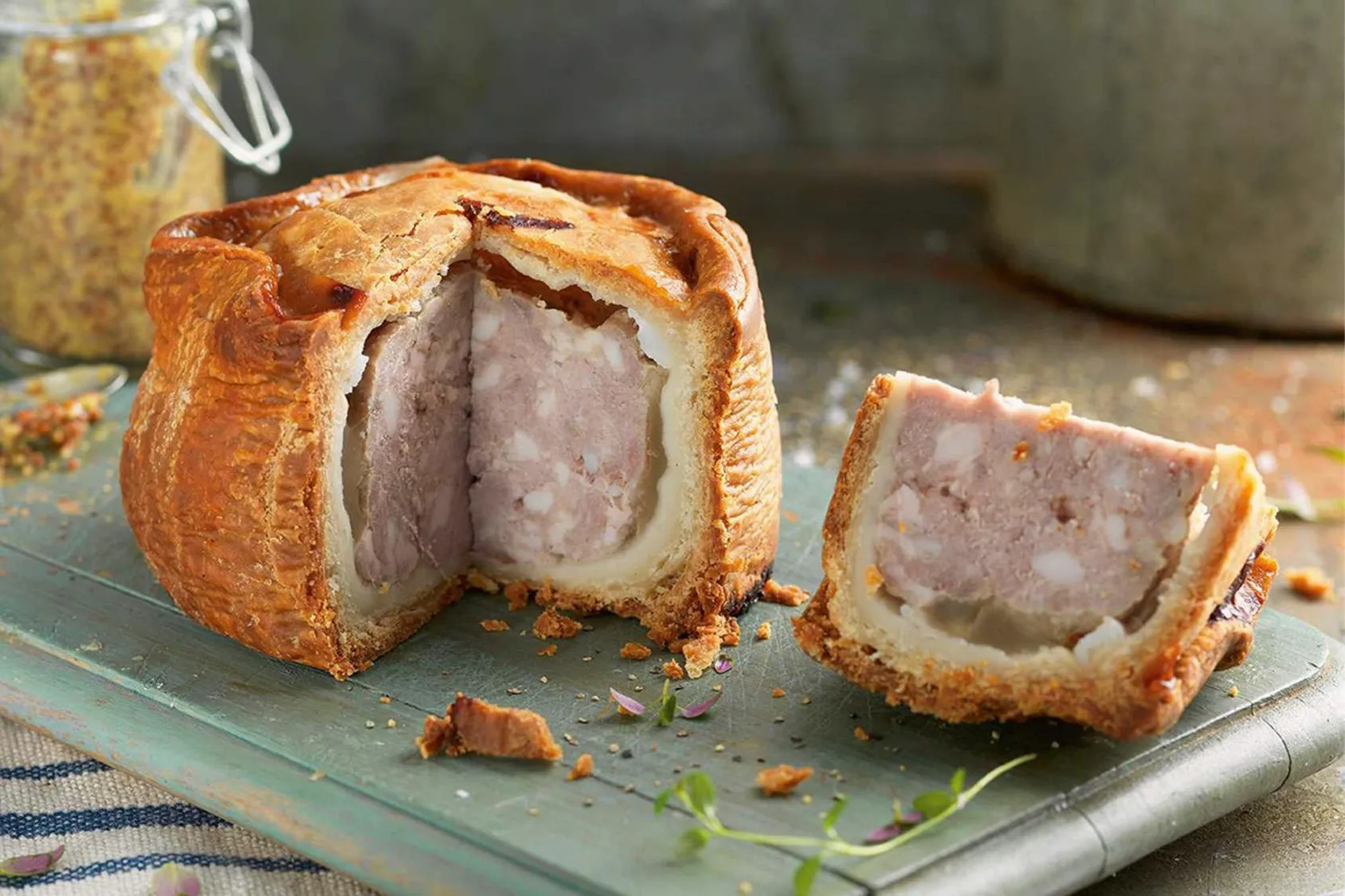
Pork Pie
Traditional British cold pie made with pork and hot water crust pastry.
Ingredients
- •Pork
- •Lard
- •Flour
- •Gelatin
- •Herbs
- •Spices
Instructions
Make Pastry
Prepare hot water crust pastry
Prepare Filling
Season and prepare pork filling
Assemble
Line mold with pastry and add filling
Bake and Set
Bake pie and add gelatin
The Pork Pie is a quintessential British cold meat pie featuring seasoned pork encased in a distinctive hot water crust pastry. This hearty pie is characterized by its tall, straight sides, golden-brown color, and the traditional meat jelly (or gelatin) that fills the space between the meat and pastry.
Dating back to the 18th century, Pork Pies were originally created as a portable lunch for farm workers in the Midlands region of England. The Melton Mowbray Pork Pie, from Leicestershire, is perhaps the most famous variety and has been granted Protected Geographical Indication (PGI) status by the European Union.
Making a traditional Pork Pie is a labor of love that requires considerable skill. The hot water crust pastry, made by combining flour with hot lard and water, must be worked while warm to create the sturdy walls. The filling typically consists of coarsely chopped pork seasoned with salt, pepper, and herbs like sage and thyme. After baking, seasoned gelatin is poured through a hole in the top, which sets to create the characteristic jelly layer.
Modern variations might include additional ingredients like chicken, game, or apple, though purists might argue these aren't true Pork Pies. Some bakers experiment with different seasonings or add caramelized onions to the filling, while others incorporate black pepper or herbs into the pastry itself.
In Britain, Pork Pies are typically served cold as part of a ploughman's lunch, at picnics, or as a snack with pickles and chutney. They're particularly popular during Christmas and other celebrations, often featured on buffet tables or in hampers.
While delicious, Pork Pies are quite rich in calories and saturated fat, with a single serving containing approximately 450-500 calories. The pastry contains gluten, making it unsuitable for those with celiac disease. Due to their high salt content, people watching their sodium intake should enjoy them in moderation. However, they are a good source of protein and can be part of a balanced diet when consumed occasionally.
